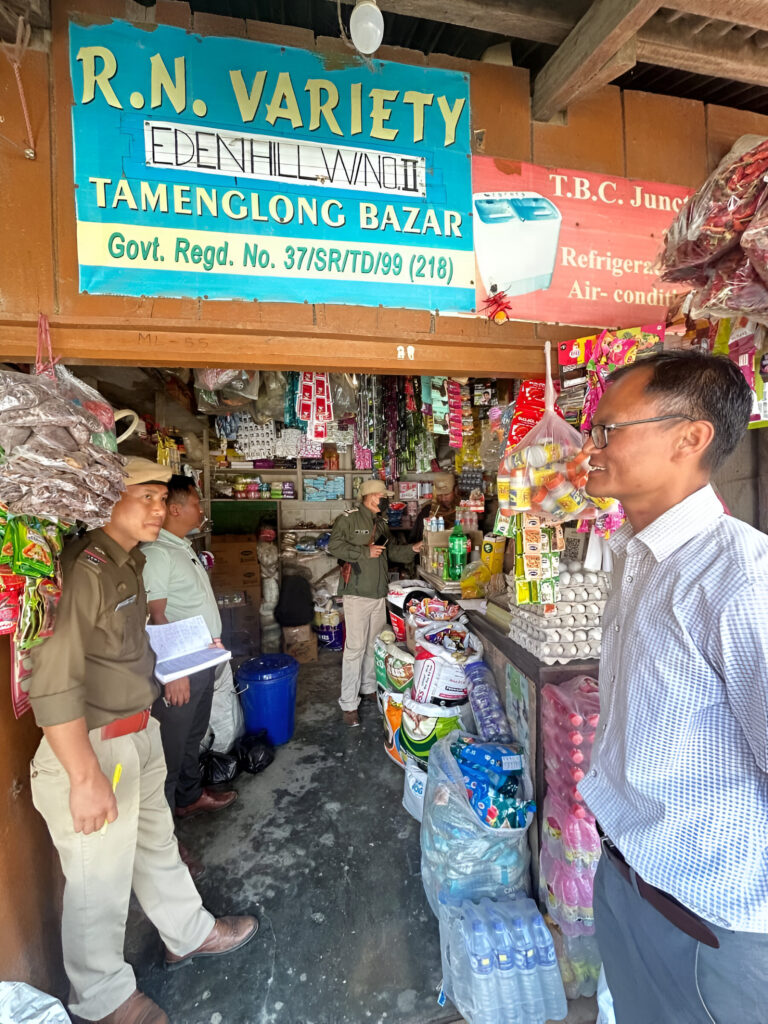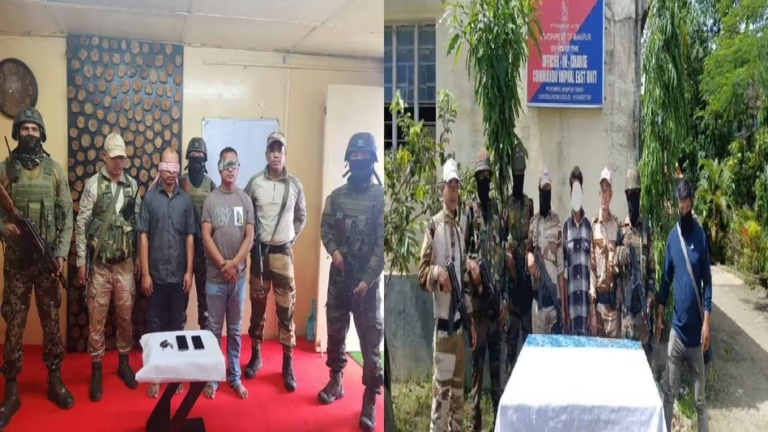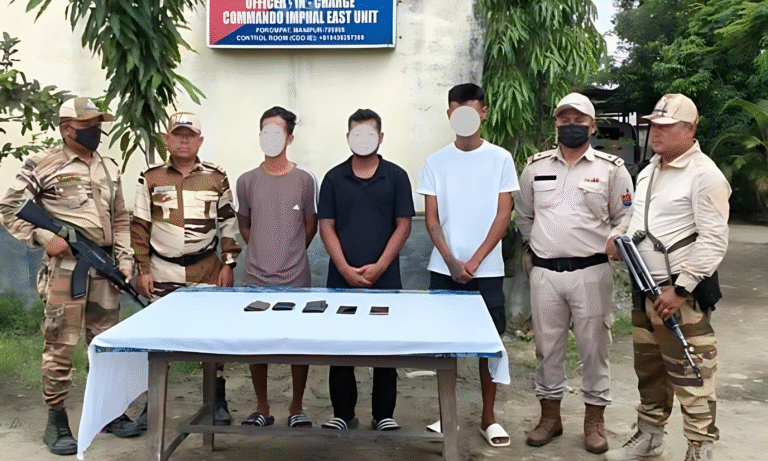Manipur Police Cracks Down on Illegal Tinted Films: Over 400 Cars Stripped in Imphal East – A Closer Look at the Operation and Its Impact
Short Summary
In a sweeping operation that has sent shockwaves through the local automotive community, Manipur police have cracked down on illegal tinted films by stripping over 400 cars in Imphal East. This decisive action aims to enforce road safety norms and curb unlawful vehicle modifications that compromise visibility and security. The operation not only highlights the commitment of local law enforcement to upholding traffic regulations but also brings to light the broader issues of vehicle customization, public safety, and regulatory challenges in the region. Let’s delve into the details of this significant crackdown and explore what it means for the future of road safety and legal vehicle modifications in Manipur.
Long Article
Introduction
Have you ever driven down a busy street only to notice how some vehicles have mysteriously darkened windows that seem to hide more than just sunlight? Well, if you’re in Manipur, particularly in Imphal East, you might have noticed an unusual calm in the midst of what used to be a chaotic scene of illegally tinted cars. Recently, the Manipur police launched a decisive operation, stripping over 400 vehicles of their illegal tinted films. This isn’t just about aesthetics or personal preferences—it’s about ensuring public safety, maintaining road visibility, and enforcing traffic regulations.
In this article, we’ll walk you through the details of this landmark operation, discuss what illegal tinted films are and why they matter, and examine the broader implications for road safety and law enforcement in the region. So, buckle up and join us as we navigate this intriguing topic with a conversational tone that makes even the nitty-gritty details easy to digest.
What Are Illegal Tinted Films?
Let’s start with the basics. Tinted films on car windows aren’t a new phenomenon. In many parts of the world, a moderate tint is considered a stylish accessory, offering benefits like UV protection, reduced glare, and enhanced privacy. But here’s the catch: when these films are applied beyond the legally permitted levels, they cross into the realm of illegality.
Illegal tinted films are those that darken the windows of vehicles beyond what traffic regulations allow. Governments and transport authorities set these limits to ensure that drivers have sufficient visibility, particularly at night or in adverse weather conditions. The idea is simple: while you might enjoy a bit of privacy, safety should always come first. When tint levels exceed the permissible standards, they not only obstruct the driver’s view but also hinder law enforcement officers from identifying occupants during routine checks or emergencies.
Details of the Crackdown
Now, let’s get into the heart of the matter. Over the past few weeks, the Manipur police have been meticulously monitoring vehicles in Imphal East. Their objective? To clamp down on the rising trend of illegal window tinting that was threatening road safety. According to official reports, in one massive operation, authorities managed to strip over 400 cars of their illegal tinted films.
Imagine the scene: early in the morning, police teams equipped with specialized tools and strict instructions converged on key areas across Imphal East. As they moved through neighborhoods and busy intersections, officers systematically identified vehicles that breached the tint limits. The operation wasn’t about a random sweep; it was a well-planned, intelligence-driven mission that aimed to send a clear message—when it comes to public safety, no shortcuts are allowed.
The results were both impressive and symbolic. With more than 400 cars affected, the operation underscored the serious commitment of Manipur police to enforcing traffic rules. The removal of these illegal films is expected to improve visibility on the roads and restore a sense of security among drivers and pedestrians alike.
Why Tinted Films? The Dark Side of Customization
You might be wondering, “Why do so many people opt for these super dark tinted films in the first place?” The answer is as layered as the films themselves. Many vehicle owners believe that a darker tint not only gives their car a sleek, modern look but also offers increased privacy and a sense of exclusivity. There’s also the perception that it can reduce the heat inside the car and protect the interior from harmful UV rays.
However, this customization often comes at a high cost. When applied illegally, these films can drastically reduce the amount of natural light entering the car, impairing the driver’s ability to see clearly, especially during night-time driving or in foggy conditions. It’s a bit like trying to read a book under a dim flashlight—you might manage for a while, but eventually, the details get lost in the shadows.
Moreover, the darker the windows, the harder it is for law enforcement to identify the occupants. This poses a significant challenge during emergencies or traffic stops, where clear visibility is crucial. So, while tinted films might be appealing from a style perspective, they can compromise safety and hinder effective policing when they cross the legal threshold.
The Impact on Road Safety and Traffic Regulations
Let’s talk about safety. When vehicles are equipped with overly darkened windows, the consequences can be dire. Poor visibility can lead to delayed reaction times, increased likelihood of accidents, and even fatalities in extreme cases. For instance, at night or in low-light conditions, drivers might not spot pedestrians, cyclists, or unexpected obstacles on the road in time to avoid a collision.
Traffic regulations are in place for a reason. They ensure that every vehicle on the road adheres to a standard that maximizes safety for everyone. By enforcing these standards, authorities help reduce the risk of accidents and ensure that all drivers are on an even playing field when it comes to visibility. In the context of Manipur, the recent crackdown is a critical step towards reinforcing these norms and ensuring that every road user is protected.
Think about it: when you’re driving, you rely on your headlights to illuminate the path ahead. Now, imagine if the windows of every car were so dark that even the best headlights struggled to make a difference. That’s the kind of scenario that could unfold if illegal tinted films were allowed to proliferate unchecked.
Local Reaction: Voices from the Streets of Imphal East
So, what’s the buzz among the locals? The reaction in Imphal East has been a mix of relief, support, and a dash of frustration. Many residents and drivers have welcomed the police operation, feeling that it’s a necessary move to restore order and safety on the roads. Local shop owners, in particular, have expressed gratitude, noting that the removal of illegal tints not only improves safety but also enhances the overall aesthetic and orderliness of their neighborhoods.
However, not everyone is on board. A segment of car enthusiasts and owners who invested heavily in aftermarket modifications argue that their personal choices should be respected, provided they don’t endanger public safety. They contend that a blanket crackdown might be a bit heavy-handed, suggesting that awareness campaigns and educational programs could be a more balanced approach to addressing the issue.
Despite these differing views, one thing is clear: the operation has sparked a broader conversation about the balance between personal expression and public safety. It’s a debate that extends beyond Manipur, touching on themes of individual freedom, regulatory oversight, and the role of law enforcement in a modern society.
The Role of Law Enforcement in Regulating Vehicle Modifications
Law enforcement agencies are often the unsung heroes behind the scenes, working tirelessly to ensure that traffic laws and safety regulations are followed. In Manipur, the recent operation is a shining example of how proactive policing can make a tangible difference in everyday life.
Officers aren’t just enforcing rules; they’re safeguarding the community. By cracking down on illegal vehicle modifications, the police are not only addressing a specific safety concern but are also setting a precedent that such activities will not be tolerated. This helps deter others from flouting the rules and creates a safer environment for everyone.
The operation in Imphal East was no small feat. It required coordination between multiple units, careful planning, and a clear understanding of the legal limits regarding tinted films. The success of this mission is a testament to the dedication and professionalism of the local police force. It’s a reminder that behind every safe journey, there’s a team of vigilant officers working to keep the roads secure.
Challenges Faced by the Authorities in Enforcing Regulations
While the recent crackdown is a major victory, it wasn’t without its challenges. Enforcing traffic regulations, especially those related to vehicle modifications, can be a tricky business. One of the biggest hurdles is keeping up with the rapid pace of technological advancements in the automotive industry. As new materials and techniques emerge, criminals and even well-meaning car owners sometimes exploit loopholes to install tints that are borderline illegal.
Additionally, resource constraints and the sheer volume of vehicles on the road make comprehensive enforcement a daunting task. Imagine trying to inspect thousands of vehicles every day—it’s like searching for a needle in a haystack. Despite these challenges, the Manipur police have shown that with determination, modern technology, and community cooperation, even the most entrenched issues can be tackled head-on.
Moreover, educating the public about the importance of adhering to legal standards is an ongoing effort. Many vehicle owners might not even be aware that their tinted films exceed the legal limits. In such cases, enforcement actions need to be paired with awareness campaigns to ensure long-term compliance and public understanding.
A Comparative Look: How Other Regions Handle Illegal Tinted Films
Manipur’s crackdown on illegal tinted films isn’t an isolated incident. In many parts of the world, authorities are increasingly clamping down on modifications that compromise road safety. In countries like the United States, Australia, and various European nations, strict guidelines govern the degree of tint allowed on vehicle windows. These regulations are enforced rigorously, with penalties ranging from fines to mandatory removal of the tint.
For instance, in several U.S. states, law enforcement officers are trained to use light meters to determine if a vehicle’s tint exceeds legal limits. Similar practices are in place in Australia, where authorities conduct random roadside checks to ensure compliance. By comparing these practices with the recent operation in Manipur, we see a clear trend: effective regulation requires a blend of strict enforcement and public education.
This comparative analysis not only highlights the global nature of the problem but also underscores the importance of localized solutions. What works in one region might need tweaking to fit the unique cultural, economic, and geographical landscape of another. In Manipur’s case, the recent crackdown is tailored to address the specific challenges faced by the community, while also aligning with broader national safety standards.
What Does the Future Hold? The Road Ahead for Vehicle Regulations in Manipur
Looking to the future, one can’t help but wonder: what changes will this operation bring about? For one, there’s hope that stricter adherence to traffic regulations will become the norm rather than the exception. With over 400 vehicles stripped of their illegal tints, there’s a strong message being sent out to both current and potential offenders.
Local authorities are likely to build on this momentum by conducting regular checks and launching awareness campaigns to educate vehicle owners about the legal standards for window tints. It’s a proactive approach that aims to not only punish past violations but also prevent future ones. This holistic strategy—combining enforcement, education, and community engagement—could serve as a model for other regions grappling with similar issues.
Furthermore, there’s an opportunity for technological innovation. Just as criminals and enthusiasts find new ways to push the boundaries, law enforcement agencies are also exploring cutting-edge tools to monitor and enforce regulations more effectively. From advanced light meters to integrated camera systems that automatically detect violations, the future of traffic regulation in Manipur might be more tech-savvy than ever before.
Ultimately, the hope is that by tightening the reins on illegal vehicle modifications, Manipur can pave the way for safer roads and a more responsible driving culture. It’s about finding that sweet spot where personal customization meets public safety—a balance that respects individual tastes without compromising the well-being of the community.
Community and Economic Impacts
Beyond safety, there’s an economic dimension to consider. Illegal vehicle modifications, including overly tinted films, can have broader implications for local businesses and insurance companies. When accidents occur due to poor visibility or impaired driving, the financial and emotional toll on families and communities can be enormous. Insurance premiums might skyrocket, and the cost of repairs and medical care can strain local economies.
On the flip side, when authorities enforce these regulations, they also help create a more predictable environment for investors and businesses. Safer roads mean fewer accidents, which in turn translate to lower costs for insurers and fewer disruptions for local commerce. In this way, the crackdown isn’t just a law enforcement measure—it’s an investment in the community’s long-term economic health.
Balancing Personal Freedom and Public Safety
One of the most contentious aspects of this issue is the balance between personal freedom and public safety. Many vehicle owners cherish the ability to customize their cars, seeing it as an expression of individuality. Yet, when those modifications pose a risk to others, the scales tip in favor of collective well-being. It’s a classic example of the age-old debate: how much personal liberty can we exercise when it comes into conflict with the greater good?
By stripping illegal tinted films, the Manipur police are not denying individuals the right to personal expression. Instead, they’re reinforcing the idea that certain limits are essential when personal choices have a direct impact on public safety. It’s like having a dress code in a school—it might seem restrictive to some, but it ensures a safe and orderly environment for everyone.
Lessons Learned and the Way Forward
What can we take away from this operation? First and foremost, it’s clear that proactive law enforcement can make a substantial difference. When police and community leaders work together, they can tackle even the most entrenched issues with precision and fairness. The success of the operation in Imphal East should serve as an inspiration for other regions dealing with similar challenges.
Secondly, education and awareness are crucial. Many vehicle owners may simply be unaware of the regulations or the reasons behind them. By launching targeted awareness campaigns, authorities can bridge this knowledge gap and foster a culture of compliance that benefits everyone.
Finally, the operation underscores the importance of continuous adaptation. As technology and consumer preferences evolve, so too must the strategies employed by law enforcement. Embracing modern tools and fostering partnerships with the community will be key to maintaining safe and orderly roads in the years to come.
Conclusion: The Bigger Picture and the Need for Responsible Modifications
In wrapping up, the crackdown on illegal tinted films in Manipur, which saw over 400 cars stripped in Imphal East, is much more than a routine traffic enforcement exercise. It’s a clear statement that while individual customization is valued, it must never come at the expense of public safety. This operation highlights the delicate balance between personal freedom and societal responsibility, urging all of us to think twice about the modifications we make and the potential consequences they carry.
For the residents of Manipur and beyond, this is a reminder that every rule has its purpose. When regulations are respected, roads become safer, communities grow stronger, and trust in law enforcement is reinforced. As we look to the future, it’s vital for authorities, vehicle owners, and the wider community to work together towards a common goal: a safer, more responsible, and well-regulated driving environment.
By learning from this experience and embracing a proactive approach to enforcement and education, Manipur can set a shining example for regions facing similar challenges. So next time you see a car with just the right amount of tint—not too dark, not too light—remember, it’s not just about style; it’s about safety, responsibility, and the collective good.
FAQs
- What exactly are illegal tinted films and why are they considered a problem?
Illegal tinted films darken vehicle windows beyond legally permitted levels, reducing visibility and hindering law enforcement. They are considered a problem because they compromise driver safety, especially in low-light conditions, and can obstruct the identification of vehicle occupants during emergencies. - How did the Manipur police identify and strip over 400 vehicles of illegal tints?
The police used a combination of surveillance, intelligence gathering, and specialized tools like light meters to identify vehicles with illegal tinting. A coordinated operation across Imphal East led to the systematic removal of the illegal films from over 400 cars. - What are the potential safety risks associated with overly dark tinted windows?
Overly dark tinted windows can significantly reduce visibility for drivers, especially at night or in adverse weather conditions, increasing the risk of accidents. They also make it harder for law enforcement to conduct routine checks, which can impede emergency response. - How does this crackdown impact the local community and economy?
By enforcing traffic regulations and ensuring better road safety, the crackdown helps reduce accidents and related costs. This not only protects lives but also contributes to a more stable economic environment, lowering insurance premiums and fostering investor confidence. - What measures can be taken to prevent illegal tinting in the future?
Future prevention strategies include regular vehicle inspections, public awareness campaigns, and the use of advanced technology for monitoring tint levels. A balanced approach combining enforcement, education, and community engagement is key to long-term compliance.





